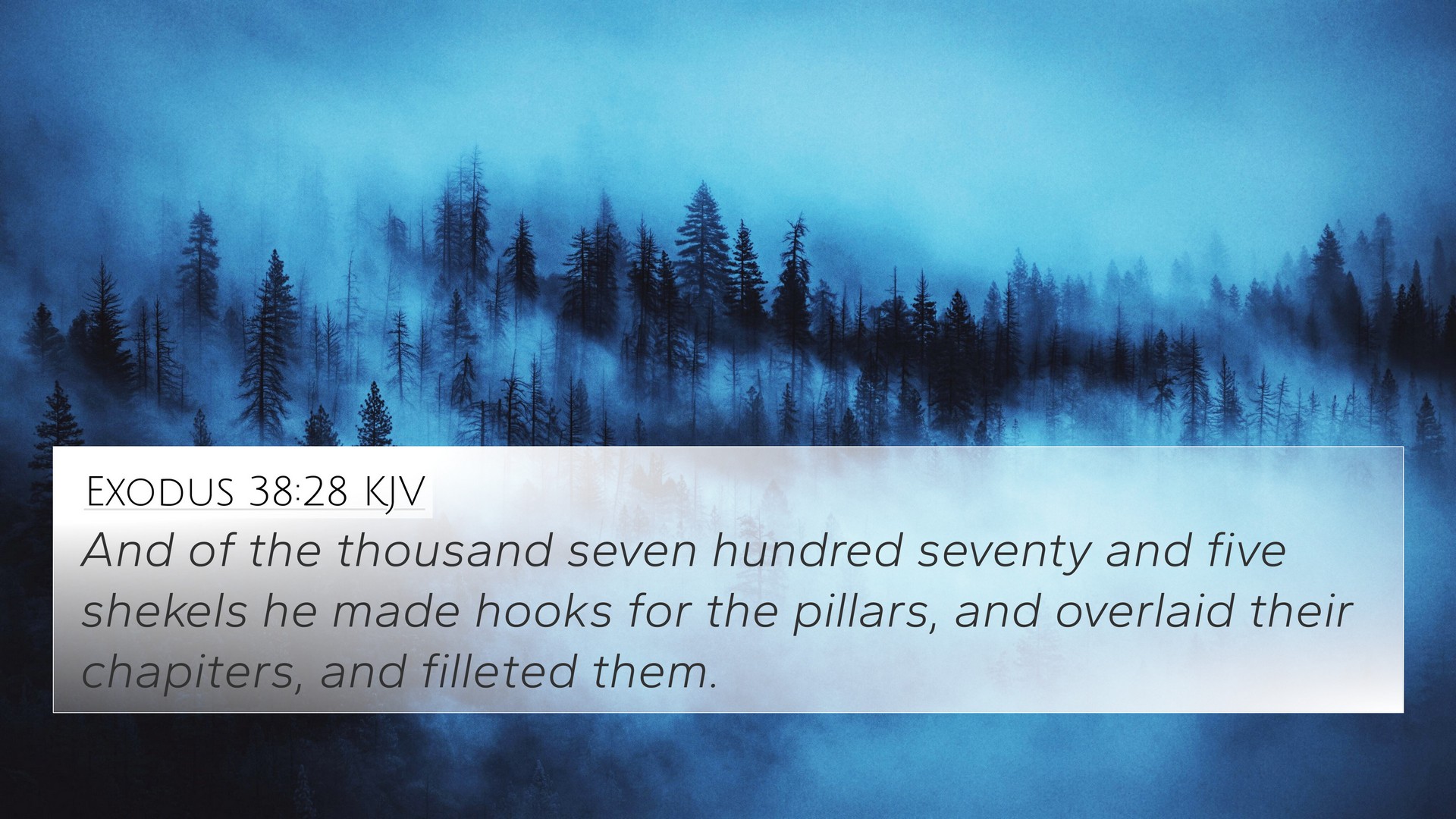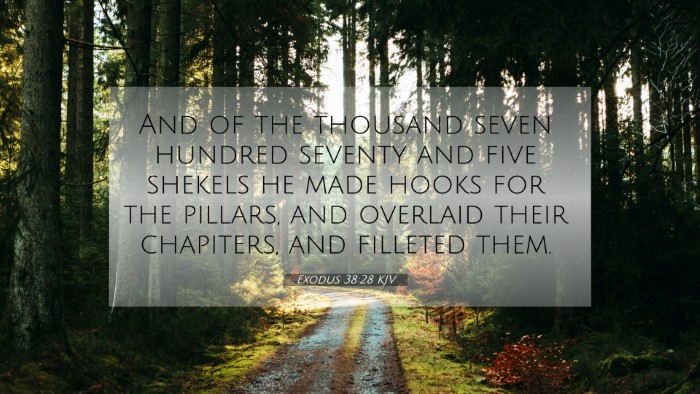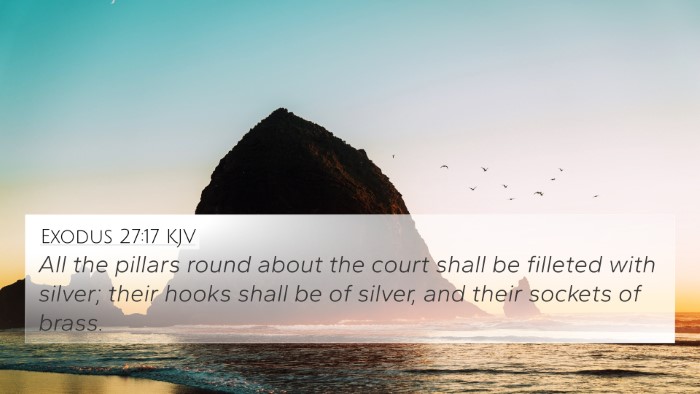Understanding Exodus 38:28
Exodus 38:28 states, "And of the thousand seven hundred seventy and five shekels he made hooks for the pillars, and overlaid their chapiters and filleted them." This verse highlights the meticulous details in the construction of the Tabernacle, reflecting God's desire for beauty and order in worship.
Key Themes and Insights
- Divine Instruction: The instructions given for the construction of the Tabernacle were precise. Matthew Henry emphasizes that God not only desires a dwelling among His people but also specifies how it should be done to glorify Him.
- Wealth and Offerings: Albert Barnes notes that the materials used, including silver for the hooks, symbolize the resources God's people are to offer. They are reminders of the blessings received from Him.
- Symbolism of the Hooks: Adam Clarke describes the hooks as significant for they hold up the curtains of the Tabernacle. This symbolizes the support God provides to sustain His covenant with His people.
- Community Involvement: The verse serves as a testament to the collective effort in the Israelites’ worship and place of meeting God, emphasizing unity in community works for spiritual purposes.
Bible Verse Cross-References
This verse can be cross-referenced with several other scriptures that illuminate its meaning and significance:
- Exodus 25:2-8 - God's command to take offerings for the Tabernacle.
- Exodus 26:32 - The importance of the curtains representing the dwelling place of God.
- 1 Chronicles 29:3-5 - The materials used in the Temple's construction as expressions of devotion.
- Hebrews 8:5 - The earthly sanctuary as a shadow of the Heavenly reality.
- Numbers 3:36-37 - Instructions regarding the care of the Tabernacle and its elements.
- Psalm 84:1-2 - The beauty and preciousness of dwelling in God’s presence.
- Matthew 23:19 - The emphasis on the sacredness of religious objects.
Comparison and Thematic Analysis
The construction details in Exodus demonstrate a thematic parallel with other biblical texts, illustrating several key concepts:
- The Nature of Worship: The intricate details in building the Tabernacle reflect the importance of worship and the reverence due to God. This theme resonates throughout the Scriptures.
- God's Presence Among His People: Just as the Tabernacle served as God's dwelling, Christ's coming signifies God's intimate presence with humanity (John 1:14).
- Unity and Togetherness in Worship: The contributions from all members of the community for the Tabernacle correlate to the New Testament church's call for unity in faith and resources (Acts 2:44-47).
Tools for Bible Cross-Referencing
To further explore the connections between Bible verses and enhance your understanding of passages like Exodus 38:28, consider utilizing the following tools:
- Bible Concordance: A reference book that lists words found in the Bible and their locations to assist in finding cross-references.
- Bible Cross-Reference Guide: Guides that map connections between different verses based on themes, topics, or authors.
- Bible Study Software: Digital tools that often include cross-referencing features for deeper Bible study.
- Online Bible Platforms: Websites that provide search functionality for finding related verses and themes.
- Commentaries: Resources like Matthew Henry and Albert Barnes that offer insights and interpretations helping with cross-referencing.
Understanding Inter-Biblical Dialogue
The connections between different sections of Scripture are vital for comprehensive biblical theology. They allow for:
- Insights into God's Character: By studying cross-references, one can glean insights into God's unchanging nature from the Old Testament to the New Testament.
- Thematic Continuity: Identifying the same themes present across various books reveals the interconnectedness of the biblical narrative.
- Deepening Faith: Recognizing how verses support one another bolsters one's understanding and encourages a more profound faith in the Scriptures.
Conclusion
Exodus 38:28 not only illustrates the meticulous nature of God's commandments but also serves as a foundational text for understanding the importance of worship and community in the biblical tradition. By engaging in comparative studies and utilizing cross-referencing tools, readers can develop a more profound connection with God's Word and gain insight into the divine order He establishes for His people.



